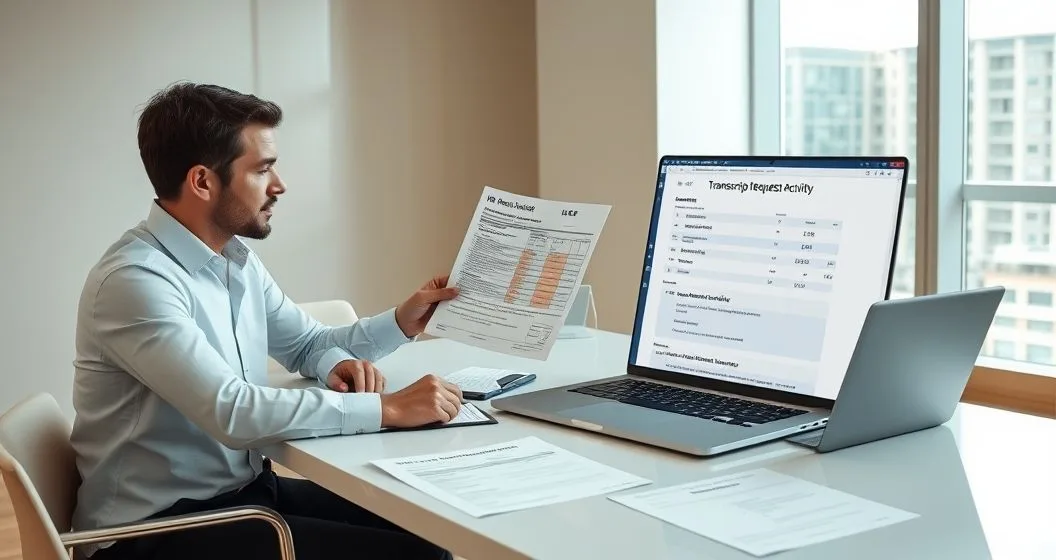Background and purpose
IRS transcripts provide condensed, official records of what the IRS shows for a taxpayer’s filed returns and account transactions. They were developed to give taxpayers, lenders, and third parties a verifiable summary of income, filing status, and IRS adjustments without requesting a full copy of the signed tax return. In my 15+ years in financial services, transcripts frequently resolve lender questions, correct filing discrepancies, and help prove identity theft on an account.
Types of transcripts (at-a-glance)
- Tax Return Transcript — Shows most line items from a return as filed (useful for income verification). Generally available for the current tax year and up to three prior years; availability varies by format. (IRS: Get Transcript)
- Account Transcript — Shows account transactions, payments, penalties, and adjustments. Useful for collection or payment-history questions. (IRS: Get Transcript)
- Wage and Income Transcript — Lists third‑party reports the IRS received (W‑2s, 1099s, 1098s). These records are often available for up to 10 years. (IRS: Get Transcript)
- Record of Account — A combined file of the return transcript and account transcript for a consolidated view.
- Verification of Nonfiling Letter — Confirms the IRS has no record of a filed return for a specified year; often required for student aid or other programs.
How to get an IRS transcript
- Get Transcript Online: Create an account and verify your identity to download immediately. The IRS requires multi‑factor verification (personal and financial data) for online access. (IRS: Get Transcript Online)
- Get Transcript by Mail: Request a transcript to be mailed to the taxpayer’s address on file; delivery usually takes 5–10 calendar days. (IRS: Get Transcript)
- Form 4506‑T: Use this form to authorize transcripts for a third party or request specific transcript types in writing. Form 4506‑T can also be used by lenders or tax preparers. (IRS: Form 4506‑T)
Important access and security notes
- Transcripts are free from the IRS. The agency does not charge for Get Transcript services. (IRS)
- Identity verification may block online access if your credit file or public records don’t match IRS records. If that happens, use Form 4506‑T or request by mail. (IRS: Get Transcript Online)
- A transcript is not the same as a signed copy of your tax return. Some lenders or agencies may still require a signed tax return or additional documentation — confirm requirements before you apply.
Common uses
- Income verification for mortgage, student loan, or other credit applications.
- Preparing for or responding to IRS notices and audits.
- Proving prior-year income to government programs or schools (Verification of Nonfiling).
- Detecting identity theft: unusual third‑party income entries can indicate fraud; transcripts are used in identity‑theft remediation. See our article on using transcripts to detect identity theft for more detail.
Mistakes to avoid
- Requesting the wrong transcript type—match the transcript to the need (income verification vs. account transactions).
- Waiting until the last minute—some mortgage closings and aid applications have tight deadlines.
- Assuming transcript access equals official acceptance by a third party—verify with the lender or agency.
Professional tips
- Order transcripts before you need them for loan closings or financial aid to avoid delays.
- If you can’t get online access, submit Form 4506‑T or request by mail; keep a record of the request.
- Review wage and income transcripts to confirm employers and payers reported correct amounts; discrepancies are common and fixable.
Related resources on FinHelp
- How to Obtain an IRS Transcript: Types, Uses, and Requests — step‑by‑step request guidance and screenshots.
- Record of Account vs Wage Transcript: Which IRS Transcript Do You Need? — helps you pick the right transcript for common scenarios.
- Using IRS Transcripts to Detect and Prove Identity Theft on Your Account — how transcripts fit into identity‑theft remediation.
Frequently asked questions (short answers)
- Are transcripts free? Yes. The IRS provides transcripts free of charge. (IRS: Get Transcript)
- How long does it take to get one? Online downloads are immediate after verification; mailed transcripts normally arrive within 5–10 days. (IRS: Get Transcript)
- How far back do transcripts go? It varies: many transcript types are available for the current year and up to three prior years, while wage and income transcripts can often be retrieved for up to 10 years. Check the IRS Get Transcript guidance for the specific type and year you need.
Authoritative sources
- IRS — Get Transcript: https://www.irs.gov/individuals/get-transcript
- IRS — Form 4506‑T (Request for Transcript of Tax Return): https://www.irs.gov/forms-pubs/about-form-4506-t
- Consumer Financial Protection Bureau — Guides on income verification and credit docs (general guidance). https://www.consumerfinance.gov/
Professional disclaimer
This article is educational only and does not replace personalized tax advice. If you have complex tax issues, identity theft concerns, or legal questions, consult a qualified tax professional or attorney.
(Updated with IRS guidance as of 2025.)



